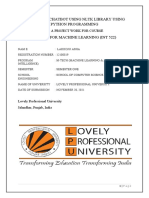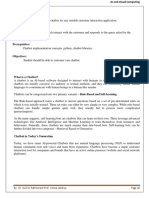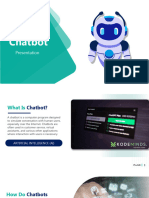0% found this document useful (0 votes)
7 views11 pagesBuilding Chatbots With Python and AI (1) NEW
The document presents a comprehensive guide on building chatbots using Python and AI libraries, highlighting the importance of conversational AI in enhancing customer interactions. It covers essential topics such as Natural Language Processing (NLP), machine learning integration, and deployment options for chatbots across various platforms. Real-world applications in industries like customer service, e-commerce, and healthcare are also discussed, showcasing the versatility of chatbots.
Uploaded by
Pawan SCopyright
© © All Rights Reserved
We take content rights seriously. If you suspect this is your content, claim it here.
Available Formats
Download as PPTX, PDF, TXT or read online on Scribd
0% found this document useful (0 votes)
7 views11 pagesBuilding Chatbots With Python and AI (1) NEW
The document presents a comprehensive guide on building chatbots using Python and AI libraries, highlighting the importance of conversational AI in enhancing customer interactions. It covers essential topics such as Natural Language Processing (NLP), machine learning integration, and deployment options for chatbots across various platforms. Real-world applications in industries like customer service, e-commerce, and healthcare are also discussed, showcasing the versatility of chatbots.
Uploaded by
Pawan SCopyright
© © All Rights Reserved
We take content rights seriously. If you suspect this is your content, claim it here.
Available Formats
Download as PPTX, PDF, TXT or read online on Scribd
/ 11


































































































